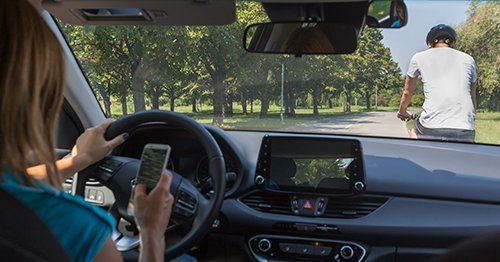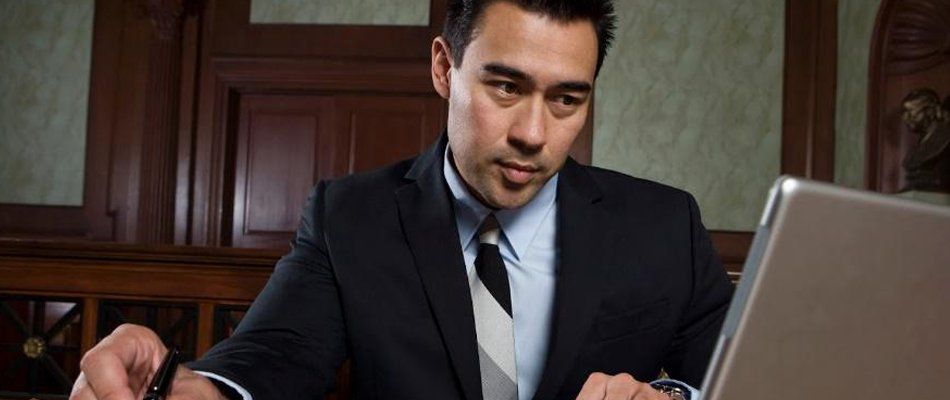BLOG
Who Is Liable for Insurance Claims in a Ridesharing Accident?
- By ADMIN
- •
- 11 Apr, 2018
- •

Ridesharing has grown into a nationwide industry, but in many ways, the business is still in its infancy. Tricky legal questions arise when drivers for a company like Uber mix commercial driving with independent contracting. If you are injured during a ride from a ridesharing driver, who is liable, and what are your options? Read on to learn more.
Determining Fault in the Accident
In some cases, an accident in a ridesharing vehicle may not be the fault of your driver. Other cars on the road are always a hazard, even for professionals. It can sometimes take hours, days, and even weeks to determine fault in a collision, so remember to stay calm and courteous with everyone involved.
If the driver of the vehicle that hit you is determined to be at fault, then your insurance claim will go through his or her provider instead. It then becomes a standard auto accident claim, though you will likely still need to work with the driver and ridesharing company throughout the process.
Most rideshare drivers are trained to respond to an emergency situation, including providing you with the insurance information you need. Prioritize the safety of yourself and others after an accident, but begin documenting the incident as soon as possible. Be sure you have contact numbers and leave a statement with the police before leaving.
Understanding Rideshare Insurance Coverage
If, on the other hand, your driver's negligence caused the crash, you will need to coordinate with both the driver and the parent company. The bad news is that, in most cases, you will not be able to sue the company for damages. Since drivers are hired as independent contractors, their actions do not legally reflect the business they work for.
Thankfully, you still have options. Major rideshare apps now offer insurance to cover their drivers while on duty. These policies cover passengers, other drivers, and bystanders in the event of an at-fault accident. At other times, such as before the driver picks up a passenger, the rideshare vehicle may have limited or no coverage, defaulting to the driver's personal policy.
This scenario can be a messy one for both the injured party and the driver. Personal insurance policies typically do not cover commercial work, potentially leaving the driver underinsured and unable to handle your claim. It must then be resolved through your own insurance carrier, so long as you have an uninsured or underinsured driver policy. This typically applies even if you were not driving at the time.
Putting Together Your Personal Injury Claim
Once you and your attorney have a thorough understanding of the case, who is at fault, and the insurance carrier responsible for coverage, you can move forward with your claim. This usually involves taking medical exams, attending therapy, undergoing a vehicle inspection, collecting witness testimonies, and pushing your cause with insurers.
Besides the potential problems already discussed, there are a few more issues that can pop up in these cases. The first of these is coverage in a catastrophic crash totaling more than a million dollars in damages. This exceeds the standard coverage of the popular ridesharing apps. You may need to negotiate with your own insurance company to be made whole.
If you have been in an accident involving a rideshare driver and aren't sure where to turn next, it always helps to have an experienced attorney on your side. A personal injury lawyer is dedicated to protecting your interests and ensuring you receive the right compensation for your pain and suffering. Call us at the Law Offices of Burton J. Hass today to go over the details of your case.
Determining Fault in the Accident
In some cases, an accident in a ridesharing vehicle may not be the fault of your driver. Other cars on the road are always a hazard, even for professionals. It can sometimes take hours, days, and even weeks to determine fault in a collision, so remember to stay calm and courteous with everyone involved.
If the driver of the vehicle that hit you is determined to be at fault, then your insurance claim will go through his or her provider instead. It then becomes a standard auto accident claim, though you will likely still need to work with the driver and ridesharing company throughout the process.
Most rideshare drivers are trained to respond to an emergency situation, including providing you with the insurance information you need. Prioritize the safety of yourself and others after an accident, but begin documenting the incident as soon as possible. Be sure you have contact numbers and leave a statement with the police before leaving.
Understanding Rideshare Insurance Coverage
If, on the other hand, your driver's negligence caused the crash, you will need to coordinate with both the driver and the parent company. The bad news is that, in most cases, you will not be able to sue the company for damages. Since drivers are hired as independent contractors, their actions do not legally reflect the business they work for.
Thankfully, you still have options. Major rideshare apps now offer insurance to cover their drivers while on duty. These policies cover passengers, other drivers, and bystanders in the event of an at-fault accident. At other times, such as before the driver picks up a passenger, the rideshare vehicle may have limited or no coverage, defaulting to the driver's personal policy.
This scenario can be a messy one for both the injured party and the driver. Personal insurance policies typically do not cover commercial work, potentially leaving the driver underinsured and unable to handle your claim. It must then be resolved through your own insurance carrier, so long as you have an uninsured or underinsured driver policy. This typically applies even if you were not driving at the time.
Putting Together Your Personal Injury Claim
Once you and your attorney have a thorough understanding of the case, who is at fault, and the insurance carrier responsible for coverage, you can move forward with your claim. This usually involves taking medical exams, attending therapy, undergoing a vehicle inspection, collecting witness testimonies, and pushing your cause with insurers.
Besides the potential problems already discussed, there are a few more issues that can pop up in these cases. The first of these is coverage in a catastrophic crash totaling more than a million dollars in damages. This exceeds the standard coverage of the popular ridesharing apps. You may need to negotiate with your own insurance company to be made whole.
If you have been in an accident involving a rideshare driver and aren't sure where to turn next, it always helps to have an experienced attorney on your side. A personal injury lawyer is dedicated to protecting your interests and ensuring you receive the right compensation for your pain and suffering. Call us at the Law Offices of Burton J. Hass today to go over the details of your case.

Bicycles are hard to see and require no training or license to ride, making for extremely dangerous situations. According to the Pedestrian and Bicycle Information Center, nearly one-third of serious accidents involving bicycles also involve contact with vehicles.
While things like wearing a helmet, wearing protective gear, and using lights on your bicycle at night can help keep you safer when you ride, accidents are still a possibility. When they do happen, the information here will help you know better what to do to protect yourself physically and financially.
While things like wearing a helmet, wearing protective gear, and using lights on your bicycle at night can help keep you safer when you ride, accidents are still a possibility. When they do happen, the information here will help you know better what to do to protect yourself physically and financially.








